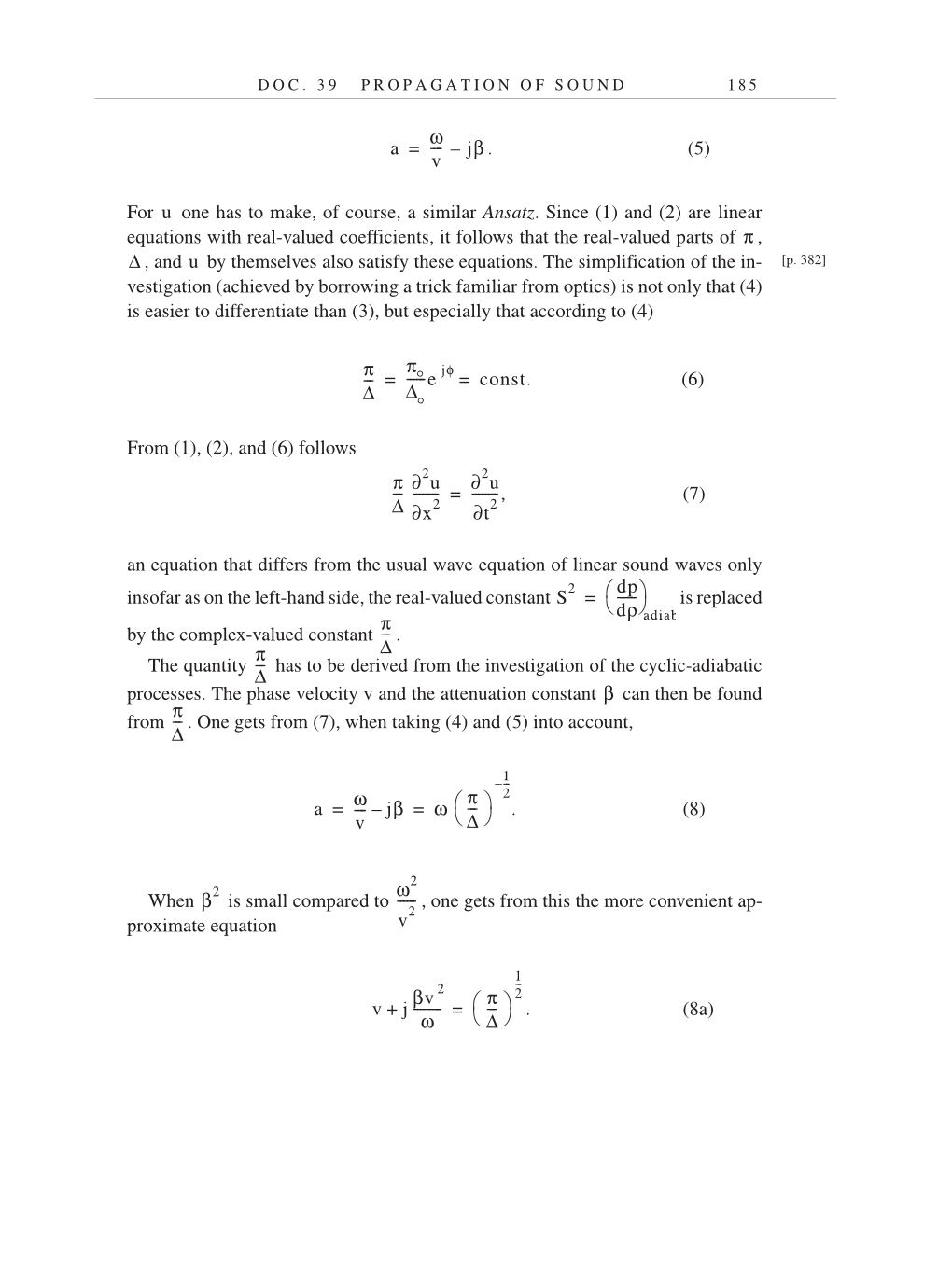D O C . 3 9 P R O P A G A T I O N O F S O U N D 1 8 5
. (5)
For one has to make, of course, a similar Ansatz. Since (1) and (2) are linear
equations with real-valued coefficients, it follows that the real-valued parts of ,
, and by themselves also satisfy these equations. The simplification of the in-
vestigation (achieved by borrowing a trick familiar from optics) is not only that (4)
is easier to differentiate than (3), but especially that according to (4)
(6)
From (1), (2), and (6) follows
(7)
an equation that differs from the usual wave equation of linear sound waves only
insofar as on the left-hand side, the real-valued constant is replaced
by the complex-valued constant .
The quantity has to be derived from the investigation of the cyclic-adiabatic
processes. The phase velocity v and the attenuation constant can then be found
from . One gets from (7), when taking (4) and (5) into account,
(8)
When is small compared to , one gets from this the more convenient ap-
proximate equation
. (8a)
a
ω-
v
---
jβ – =
u
π
Δ u
[p. 382]
π
Δ
---
π
°
Δ
°
----- -
e
jφ
const. = =
π
Δ
---
∂
2
u
∂x2
--------
∂
2
u
∂t2
--------,
=
S2
dp
dρ⎠
------⎞
⎝
⎛
adiab
=
π
Δ
---
π
Δ
---
β
π
Δ
---
a
ω
v
--- - jβ – ω
π
Δ
---
⎝ ⎠
⎛ ⎞
1
2
- –--
. = =
β2
ω2
v2
------
v j
βv-
2
ω
--------
+
π
Δ
---
⎝ ⎠
⎛ ⎞
1
2
-- -
=
